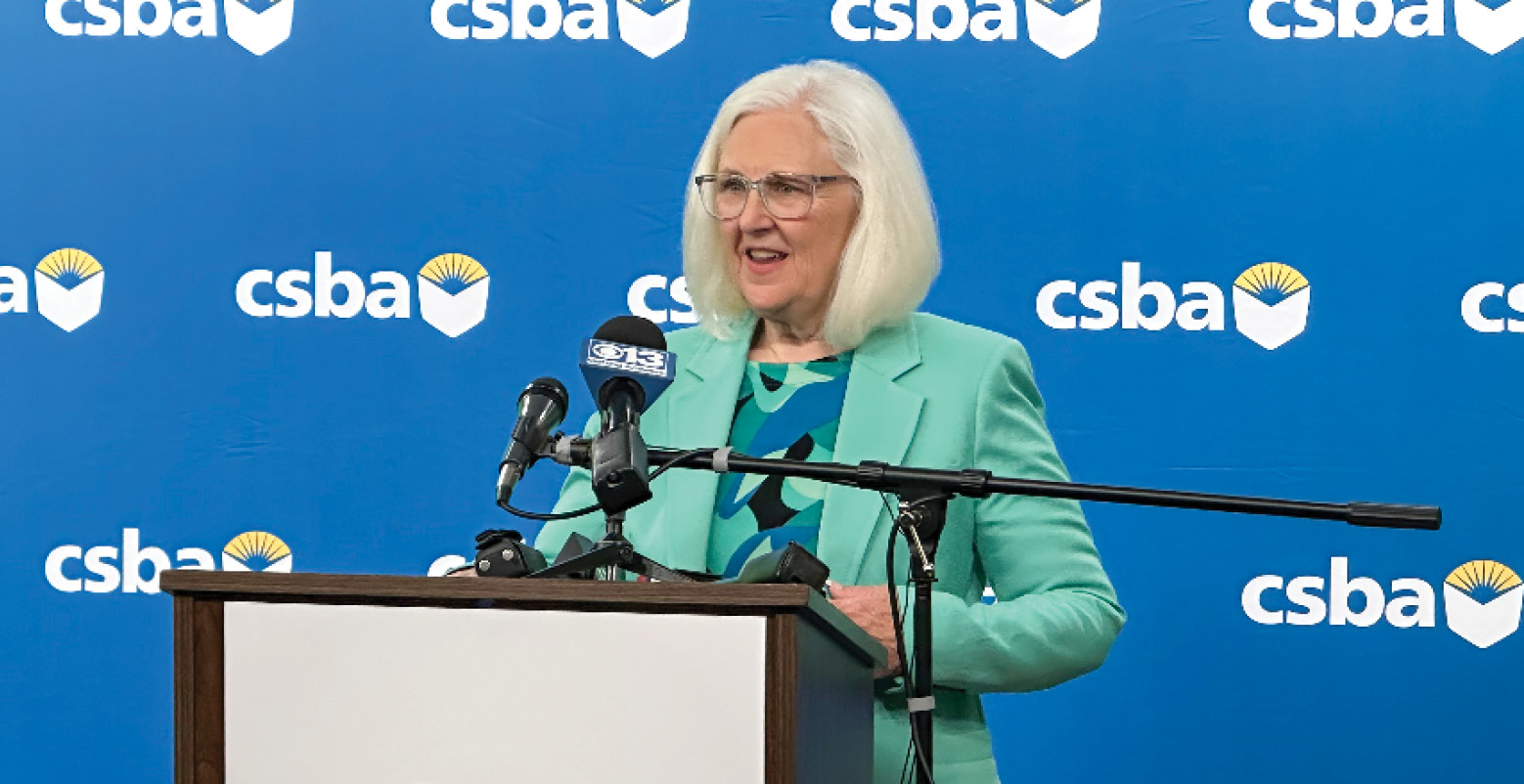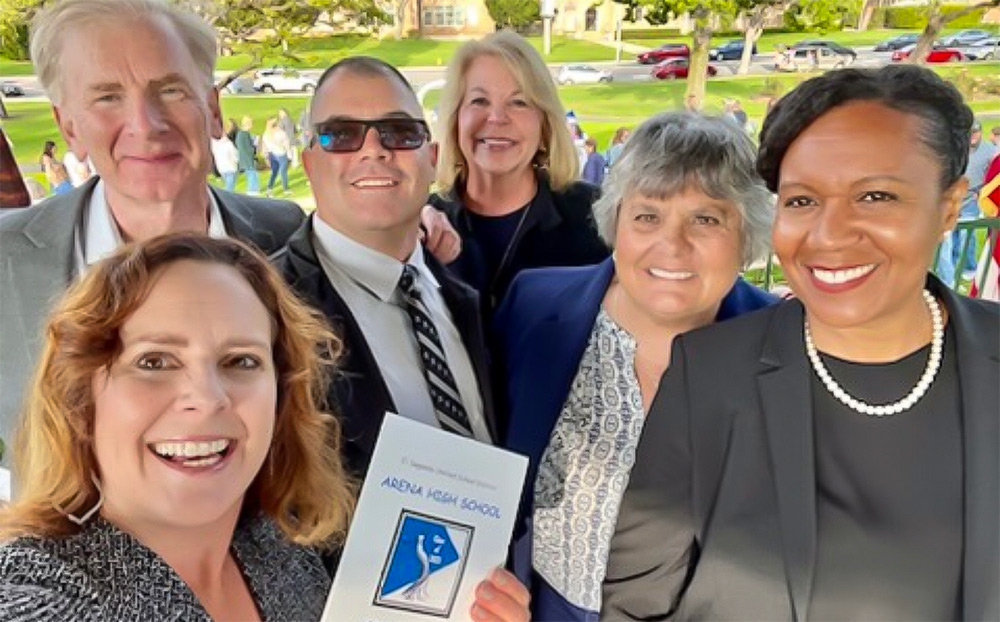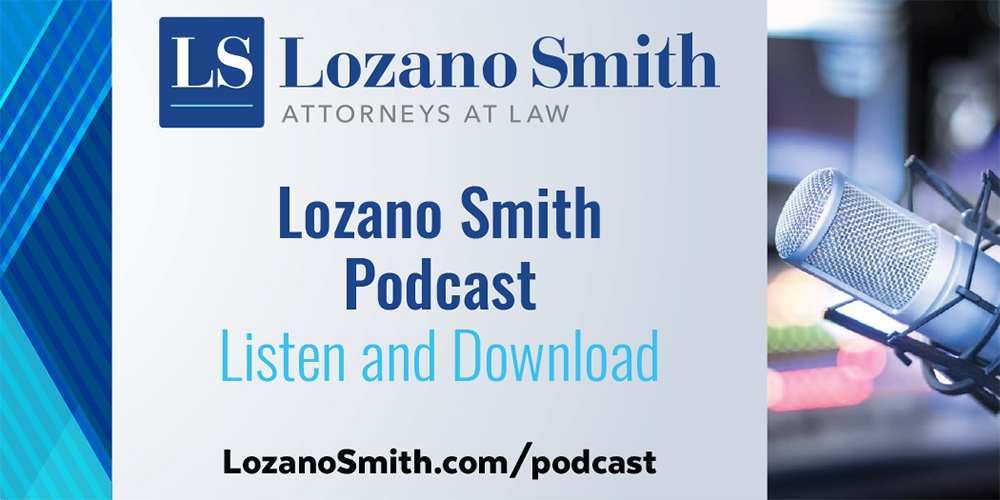


CSBA and the California Association of School Business Officials (CASBO) have joined forces with Carahsoft Technology Corp., the Trusted Education IT Solutions Provider™, to reduce costs, streamline compliance and simplify technology procurement for California public schools. The partnership, known as Golden State Technology Solutions, allows local educational agencies to economically purchase hardware, software, training, consulting and cybersecurity services, saving time and money and freeing resources for student support.

Troy Flint | tflint@csba.org
Editorial Director:
Kimberly Sellery | ksellery@csba.org
Staff Writers and Contributors:
Alisha Kirby | akirby@csba.org
Heather Kemp | hkemp@csba.org
Teresa Machado | tmachado@csba.org
Kristin Lindgren | klindgren@csba.org
Dana Scott | dscott@csba.org
Dustin Bindreiff | dbindreiff@csba.org
Director of Graphic Design & Branding:
Kerry Macklin | kmacklin@csba.org
Senior Graphic Designer:
Amanda Moen | amoen@csba.org
Susan Markarian | Pacific Union ESD
President-elect:
Albert Gonzalez | Santa Clara USD
Vice President:
Bettye Lusk | Monterey Peninsula USD
Immediate Past President:
Dr. Susan Heredia | Natomas USD
CEO & Executive Director:
Vernon M. Billy
California School News (ISSN 1091-1715) is published 11 times per year by the California School Boards Association, Inc., 3251 Beacon Blvd., West Sacramento, CA 95691. 916-371-4691. $4 of CSBA annual membership dues is for the subscription to California School News. The subscription rate for each CSBA nonmember is $35. Periodicals postage paid at West Sacramento, CA and at additional mailing office. POSTMASTER: Send address changes to California School News, 3251 Beacon Blvd., West Sacramento, CA 95691.
News and feature items submitted for publication are edited for style and space as necessary.

Student attendance, much like student learning, has not recovered from the effects of the COVID-19 pandemic. While California Department of Education data is not yet available for the 2022–23 school year, the 2022 California School Dashboard Chronic Absenteeism Indicator was “very high,” recording a statewide chronic absence rate of a 30 percent — more than double the rate of 14.3 percent in the 2020–21 school year.
The highest levels of chronic absenteeism — defined as missing 10 percent of the school year for any reason — occurred among students experiencing homelessness, Pacific Islander, African American and American Indian students. But 11 of 13 student groups were labeled as having very high rates of chronic absenteeism, with only Asian and Filipino students designated as “high.”

The CSBA-sponsored legislation, authored by Assemblymember Diane Papan (D-San Mateo), would allow schools the same access to the information, guidance and coordination needed to effectively implement cybersecurity as other government agencies receive through the California Cybersecurity Integration Center (Cal-CSIC). It would also require Cal-CSIC to gather input from local educational agencies.
“I’m so honored to be able to do this bill … to make sure that all of our elementary schools, all the way through high school, are protected from cyberattacks,” Papan said during the event, which took place at Elk Grove Unified School District’s Florence Markofer Elementary. “As technology begins to play a bigger role in schools, we’ve got to make sure that they’re protected.”
Resources
5 Questions with Dieema A. Wheaton, El Segundo USD

- Trained mental health professionals at each school.
- Partnerships with the South Bay Children’s Health Center and other non-public and nonprofit agencies.
- A focus on social-emotional learning through the RULER program.
RULER is an evidence-based approach to integrating social and emotional learning in schools. It teaches students the skills of emotional intelligence, which includes recognizing, understanding, labeling, expressing and regulating emotions. These skills are essential for teaching and learning, sound decision-making, physical and mental health, and success in school and beyond.
Board of education members — while elected by the public — are neighbors, friends, business partners and acquaintances to many in the communities they serve. Engaging with the public in their capacity as elected public officials requires mindfulness of their role with attention and understanding that their “board hat” is always on.
Governance
After nearly four years of rewrites, debates and thousands of public comments, the State Board of Education adopted a revised K-12 Mathematics Framework during its July 12–13 meeting.
The framework is meant to support implementation of the California Common Core State Standards for Mathematics by offering guidance for enacting the standards through curriculum and instructional approaches grounded in research and reflecting best practices in learning and equity.
“The document we have is guidance, and every local school district has and should take that opportunity to design the coursework and instructional pathways that are most relevant to the students they serve in their community,” said Board Vice President Cynthia Glover Woods.
While district use of the framework is voluntary, it is likely to heavily influence local educational agencies’ decisions and serve as guidelines for textbook publishers.

In recent months, there has been an increase in the removal and public disapproval of educational materials used in schools, including both school library books and instructional materials/curriculum. On May 30, the California Department of Education (CDE) released “Guidance on Removal of Instruction or Instructional Materials,” outlining rights held by students and the responsibilities of board members when considering and selecting educational materials for schools. Following CDE’s guidance, Gov. Gavin Newsom, Attorney General Bonta and State Superintendent of Public Instruction Tony Thurmond issued a joint letter on June 1, describing the importance of protecting students’ access to representative and unbiased educational materials and giving a brief overview of Supreme Court precedent on the topic of removal of educational materials from schools. While these resources are a helpful starting point, both documents are silent about the important role that school boards play in both protecting the rights of students and meeting the needs of their communities through the approval of educational materials for schools.
Ransomware attacks have grown in recent years and schools have increasingly been identified as soft targets lacking the capacity to ward off hackers. In addition, greater reliance on technology to deliver instruction and services since the COVID-19 pandemic has left schools increasingly vulnerable to cyberattacks.
In 2022, cyberattacks grew by 150 percent, with the average attack lasting 66 hours. Cyberattacks against the education sector increased by 36 percent. For local educational agencies, it is not a matter of if — but when — school information systems will be subject to a cyberattack, which can render the entire school district or county office of education unable to conduct the day-to-day business of educating students.
Resources
CSBA Fast Facts and Figures
2022–23 CSBA Membership
964
Members


Local educational agencies (school districts, county offices of education and regional occupational centers/programs) are members of CSBA
Membership Rate

Represented


PreK-12 public school students represented by CSBA member LEAs
Local educational agencies (school districts, county offices of education and regional occupational centers/programs) are members of CSBA
PreK-12 public school students represented by CSBA member LEAs

“It is reassuring to see the court validate the agreements contained in the Charter Schools Act and repudiate the abuse of discretion by the State Board of Education that threatened to shatter the consensus obtained through AB 1505,” said CSBA CEO & Executive Director Vernon M. Billy. “The judgment makes clear that both the local school district and the county office of education exercised due diligence and complied with all protocols before denying the Mayacamas Charter petition and that SBE overreached in reversing those decisions.”
Senate Bill 941, which became effective Jan. 1, 2023, is intended to address the issue of teacher shortages in STEM and dual-language immersion programs. SB 941 allows boards to enter into agreements with other districts, COEs or charter schools to offer the same or similar corresponding individual classes and coursework to students from another LEA that has been impacted by disruptions, cancellations or teacher shortages in STEM classes and dual-language immersion programs. These agreements — called instruction collaboration agreements — enable districts to broaden their reach, allowing more students to access quality education options.

California law requires all children enrolled in schools, both public and private, to have certain doctor-recommended immunizations, or receive them when they enroll.
Aug. 25
The Brown Act
Sept. 27
The Brown Act
Sept. 16–Jan. 13, 2024 (4 sessions)
Equity Network Training
Oct. 2–30 (4 sessions)
MIG Course 1: Foundations of Effective Governance/Setting Direction
Aug. 30 | San Luis Obispo County
Sept. 27 | North Bay
Oct. 2 | East Bay
Oct. 4 | Calaveras County
Oct. 4 | Lake County
Oct. 11 | Santa Cruz County
Oct. 17 | Fresno County
Oct. 23 | Kern County/Bakersfield
Oct. 23 | San Mateo County
Oct. 25 | Shasta/Siskiyou counties
CCBE Annual Conference | Monterey
Sept. 9
MIG Course 2: Student Learning & Achievement/Policy & Judicial Review | San Marcos
MIG Course 3: School Finance Parts 1 & 2 | San Marcos
MIG Course 2: Student Learning & Achievement/Policy & Judicial Review | Sunnyvale

Thanks for reading our August 2023 newsletter!








